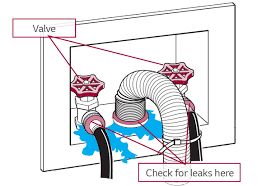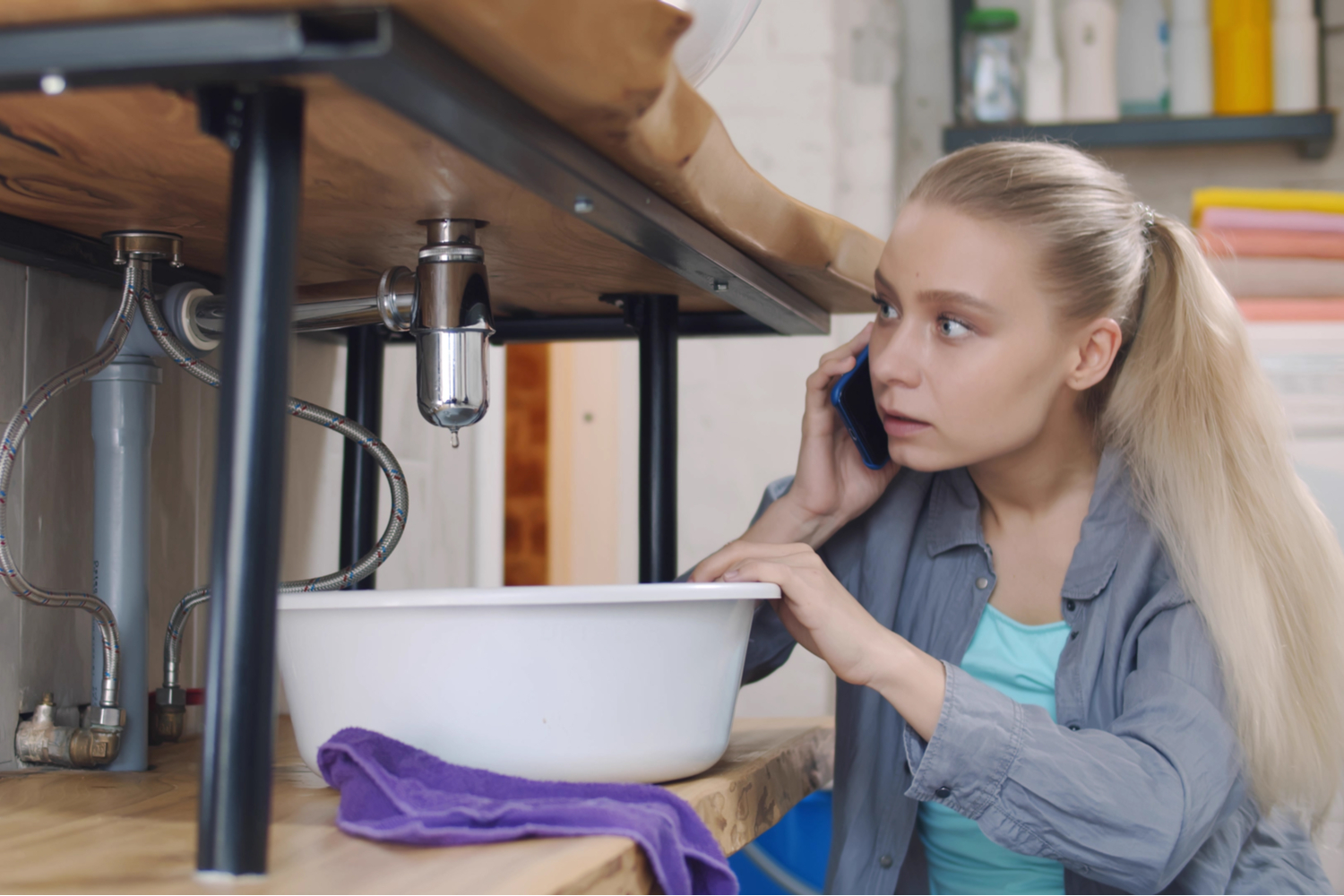You have discovered water damage in your laundry room. How did it happen? What is the best way to recover from the damage that has been done? Laundry room water damage is bad enough, but what if your laundry room is on the second floor? If that’s the case, there is another room that will also be affected; that being whatever room is located directly below the laundry room.
What caused my Laundry Room Water Damage?
Laundry room water damage can be very sneaky. Small leaks and drips can happen over time. Or a hose or waterline may burst and create a sudden overwhelming flood all at once. There are some many things that can go wrong and leave your laundry room wet, smelly, and an ideal place for mold to grow. Here are some common causes of water damage in a laundry room.
Washing Machines – they have discharge hoses that, the majority of the times, are just “hung” in a separate drain line or utility tub along side the washer. These discharge hoses can easily be jostled loose (sometimes due to vibration, sometimes just accidentally or just forced out of the drains due to the volume of water being discharged. Always double-check to make sure the discharge hose is firmly attached to whatever it is it discharges into.

Washing machines are connected to both a hot and cold water supply. That means in addition to the two water lines, there are four connection points to be concerned about. There are two where the lines attach to your plumbing and two on the backside of the washing machine. All four of these connection points need to be leak-free with no drips.
The water supply hoses are not guaranteed for the life of your washing machine. Most of these supply lines are made of rubber or plastic. The best ones have steel braiding around them. No matter what kind is being used, they all will, and do, wear out over time. They average about $20 per pair. Spending $20 once every 12-18 months is a cheap insurance policy against a ruptured washing machine supply line. When you replace the supply lines always install new hose washers on both ends of the lines.
Front loaders are known to develop door latch issues. If the latch gives way during a washing cycle, the water will flow across your floor. Another often seen problem with washing machines in general is the fill sensor goes bad and the machine fills to the point of overflowing. As these problems are next to impossible to determine in advance, never start a washing cycle if you are going to leave your house or go to bed before the cycle is complete.
Utility Sinks – instead of calling these utility sinks, a better term would be a “use it for anything sink. They are used to clean paintbrushes and paint trays, pet bowls, the kids’ muddy sneakers, you name it. A lot of “stuff” is washed down these drains. And if that “stuff” causes a clog, either completely or partially, you may have a problem when the washing machine empties out into it.
The other things to look for are slow or small leaks in the plumbing connections. If you find any water on the floor or drips under the utility sink, take corrective action immediately.
Dryers – dryers need to be vented to the outside. A dryer works by removing the moisture from your wet clothes. That moisture has to go somewhere. It is supposed to be pumped outside. If that doesn’t happen, the moisture, in the form of humidity, will be trapped in your laundry room. Mold loves warm temperatures and lots of humidity or moisture. Clean your dryer’s lint filter and the ventilation hose for clogs. Humidity buildup is bad, but a dryer fire caused by a clogged lint vent is worse by far.
Some of the newer dryers can also function as steam dryers. In order for them to work they must have a water supply running to them. Just like the washing machine supply lines, these dryer supply lines must be checked for leaks and wear.
What kind of Damage can Water do in my Laundry Room?
When leaks and drips happen slowly, you sometimes don’t discover the problem immediately. These slow water leaks can make walls and flooring wet to the point that mold begins to grow on these organic materials. All lot of these leaks happen inside wall cavities and behind washers and dryers, out of your sight.
When a supply hose breaks, the water may spray from floor to ceiling. You may hear running water, and come around the corner, only to see water flowing across the floor and down the hallway towards you.
If you happen to have wallpaper on the walls of your laundry room, the paste that was used to apply it to the walls, usually wheat-based, is a excellent food source for mold. Many vinyl floor coverings have a paper backing on them. Water will work its way under vinyl flooring. Days or weeks later when you think everything is all right, you may see staining begin to appear of start smelling a foul odor. This will be because mold is beginning to grow under the vinyl on the paper backing.
What can I do to prevent Laundry Room Water Damage?
-
Be on the lookout for clogged or slow flowing utility sink drains. If necessary, take action to unclog them yourself with a drain cleaner, or contact a plumbing company that specializes in drain cleaning.
-
Clean dryer lint filters after every cycle and make sure the dryer vent to the outside is clear of any clogs.
-
Never operate the washing machine if you are not going to be home or if you are going to bed.
-
Check for water supply line and utility drain lines for leaks or drips.
-
When leaving for a vacation, turn off the main water shutoff valve
Who should you call when Laundry Room Water Damage is found?
At Water Mold Fire Restoration, we are often called after water damage is discovered in a laundry room. Moisture can affect the integrity of any drywall or wood that it comes into contact with the water. Mold can grow in as little as 24-48 hours when conditions are right for its growth. Warm temperatures, an organic food source, and moisture are all that it takes for mold to flourish.
Many people, when they find water on vinyl flooring, think that if they just mop it up there will be no problem. Water can easily get under glued down vinyl flooring around the edges of the walls or along any seam lines. If this happens, the paper backing on the vinyl can become an organic food source for mold.
If your laundry room has been damaged by water or humidity, or you can smell a musty odor, call us at 800-905-0277. We will help you find the problem and address the damage. Our inspection and recommendation of corrective actions are free of charge. If you prefer, you can contact us via email at help@watermoldfire.net.








